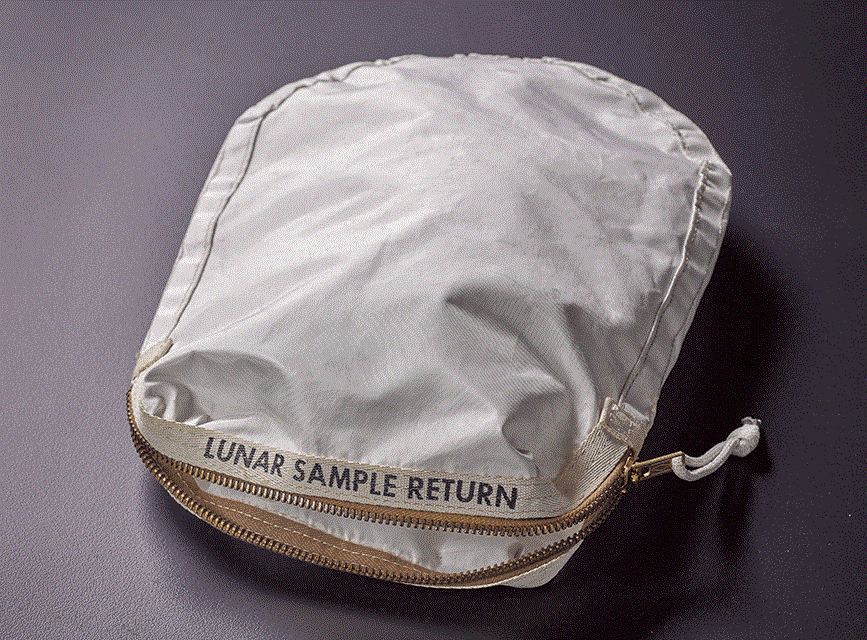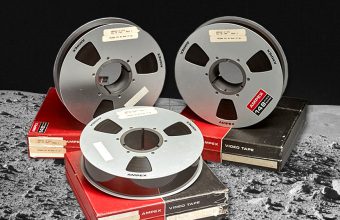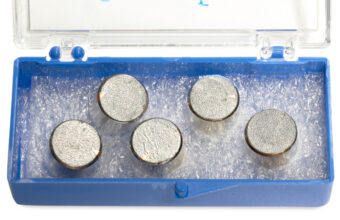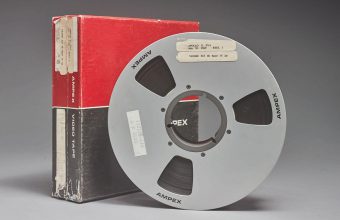A bag used by astronaut Neil Armstrong to collect mankind’s first lunar samples is heading for sale at Sotheby’s.
The bag still contains traces of moon dust and small rocks from the lunar surface, and has been described as “the most important space artefact to ever appear at auction”.
It was acquired by a collector in 2015 at auction for just $995, sparking a lengthy legal battle to determine the rightful owner.
It is now expected to sell for $2 – $4 million in a special sale of space memorabilia in New York, which takes place on July 20 to commemorate the anniversary of the Apollo 11 moon landing.
“This seemingly modest bag was part of mankind’s greatest journey, and played a crucial role in the single most important scientific task of the Apollo 11 mission – to bring back the very first sample of lunar material ever collected,” said Cassandra Hatton, Vice President and Senior Specialist in charge of the sale.
“To be able to see such an object in person is a once in a lifetime opportunity. It is one thing to read about going to the moon; it is quite another to hold in one’s hands an object that was actually there, and that still carries traces of that faraway place.”
The bag was the subject of a discussion between Armstrong and Command Module Pilot Michael Collins during the Apollo 11 mission, which is included in the Onboard Voice recordings:
Armstrong: “If you want to have a look at what the moon looks like, you can open that up and look. Don’t open the bag though.”
Collins: “What was that bag?”
Armstrong: “Contingency Sample.”
Collins: “Rock?”
Armstrong: “Yes, there’s some rocks in it too…”
The story behind the rediscovery of the bag is equally remarkable, after it mysteriously disappeared from NASA archives.
In 2014 the U.S. Marshals Service auctioned the forfeited property of Max Ary, the former Kansas Cosmosphere President who had been convicted of stealing artifacts from the museum and selling them online.
The bag was included in the auction, but remained unsold on two occasions. Due to an inventory error nobody realized that it had been flown aboard Apollo 11, and that it technically still belonged to NASA.
Then in 2015 it was snapped up by collector Nancy Lee Carlson, who paid just $995 for the bag and decided to do some research on it.
She sent it off to NASA experts at the Johnson Space Center, and having tested samples of the material inside they quickly determined that it still contained lunar dust from the Apollo 11 landing site.
Exactly how the bag had ended up amongst Ary’s collection remianed a mystery, as even astronauts themselves were never allowed to keep mementoes from their missions retaining traces of moon dust.
NASA refused to return to bag, citing its historic importance. Carlson, however, was determined to win it back and began a two-year legal battle to have it returned to her.
In December 2016 a U.S. District Court in Kansas ordered that the bag belonged to Carlson, a decision that was backed up in a Texas court when NASA appealed the ruling.
The lunar sample bag was returned to her earlier this month, and Carlson now plans to use proceeds from the upcoming auction to benefit charities including the Immune Deficiency Foundation and the Bay Cliff Health Camp Children’s Therapy and Wellness Center.
She also plans to set up a scholarship for students studying speech pathology at her Alma Mater, Northern Michigan University.













